This oratorio is dedicated to the Rosary; thus, the left nave wall depicts four of the "Joyful Mysteries of the Rosary." Below are the whole wall with the scene of the Annunciation, the deep relief with the specific scene, and joyous putti with fruit and flowers floating between this scene and the next one of the Visitation. Large allegorical figures flank the relief scenes.
|
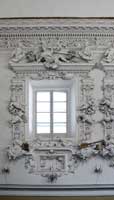
|
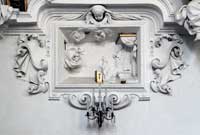
|
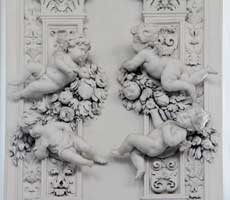
|
| |
|
The VisitationThe groups of putti seated above the relief scene often seem to comment on the scene below, sometimes responding emotionally to what is happening, sometimes mocking (or at least echoing) the participants. Here they seem to mock the meeting between Mary and Elizabeth whereas above in the Annunciation, they seemed to be joyful. Grady comments that Serpotta used the street urchins of Palermo as models for his mischievous cherubs (57). And Garstang, who locates a number of art historical sources for Serpotta's cherubs, also adds that "Serpotta infused into his putti subtle psychological nuances. The result is that extraordinary mixture in his cherubs of realism and playful allegory which has no equal in the later seventeenth and early eighteenth centuries" (72).
|

|
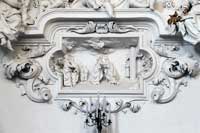
|
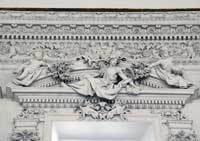
|
| |
|
Putti caricaturing the serious scene belowFlanking the putti are personifications of Hospitality (with wings) and Family holding a nest with birds. |
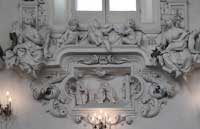
|
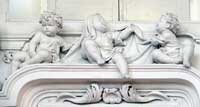
|
| |
|
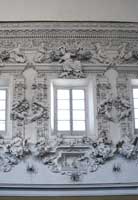
|
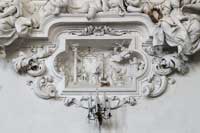
|
The third "Joyful Mystery of the Rosary," the NativityHere the putti almost participate in the action--the center putto sleeps with his leg dangling over the edge while the one on the right, with a finger to his lips, hushes us. |
| |
|
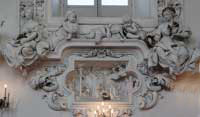
|

|

|
| |
|
Allegorical figure of Peace seated above the NativityPeace wears a crown of palm and holds olive branches. Allegorical figures, which aren't labelled and are often difficult to identify, flank the scenes on the nave walls. |

|
| |
|
The fourth "Joyful Mystery" is usually the Presentation the TempleHere Serpotta's relief seems to depict the Circumcision, a different event in Jesus' life.
|
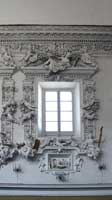
|
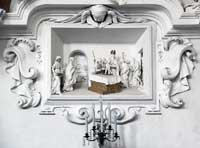
|

|
| |
|
The allegorical figure of "Hebrew Law" seated above the Presentation/CircumcisionOf this figure Garstang says, "Her wise, old face is radiant with joy. She seems about to say with Simeon: 'Lord, now lettest thou thy servant depart in peace, according to Thy word. For mine eyes have seen the salvation which thou has prepared before all peoples; a light to lighten the Gentiles and the Glory of thy people Israel.'" (68). |

|
| |
|



















